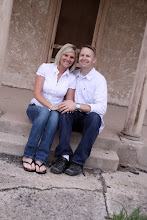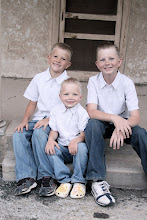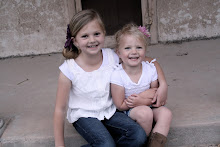I was wanting to add some great Christmas/Holiday tidbits from around the World, I guess it fits with the Christmas in July theme, right? Anyway, these are some of the things we learned and some I took from a website about Disney. It is hard to remember everything this long. Stink! I must be getting old.
*Canada: Well, it is pretty much the same as the U.S. Except some Canadians have le Pere Noel come instead of Santa Claus. Also, they have Boxing Day on the 26th, which is a day where you fill a box with presents and give it to a tradesman who has helped you through the year. They just had a storyteller share the story, he would use a few different props. He looked pretty cool and had snowshoes so Santa could make it to all the houses.
*United Kingdom: I have talked a bit about this one. Some things I learned are: "Deck the Halls" came from here, they are also the ones who started the tradition of sending Christmas cards, which I love, even if I am not great at it. Also, another fun one is kissing under the mistletoe. (woot-woot) And, Father Christmas wears not a hat, but a crown of holly.
*France: Of Course, le Pere Noel comes to France on Christmas Eve. He fills the children's shoes which are left around the tree. Also, most of the homes display a beautiful Nativity scene called, a creche. It is considered one of the most important symbols of Christmas to the French. Traditionally, candles are lit around the Creche and sometimes a Yule Log is burned. After midnight mass, a dinner is served called, le reveillon, where they serve things like; ham, goose, oysters, salads, cheese, and a dessert called, Buche de Noel, which is a cake in the shape of a Yule Log. YUM! (This dinner is also a tradition in some parts of Canada).
*Morocco: Taarji tells us stories of Ramaddan, which celebrates the month in which Allah revealed the Quran. Something that is celebrated in Morocco is called, Ashura. Families join together and have a feast after sunset, then the children are given gifts, toys, sweets, and often a special drum called a taarija. Then, the children build bonfires and dance and sing around them all through the night.
(Thanks to M. Bachland for these and other pics).
*Japan: "O Shogatsu, a Daruma doll street vendor, tells the story of a Japanese New Years tradition observed by some Japanese. The Daruma doll is a symbol of perseverance and good luck in Japan. As part of New Year's celebration, Daruma dolls are given as a gift of encouragement. The doll does not have eyes painted on it. When the holder of the Daruma doll commits to attain a goal or a big task, one eye is painted. The other eye is painted only when the goal is achieved or the task accomplished. So, the Daruma doll serves as both a reminder and a source of encouragement." We actually didn't get to see much of this one, this explanation was taken from allears. Sounds like a good idea though, right?
*AMERICA: America showcased Santa Claus, where there was a simple line for people to stand in and sit on Santa's lap. It was a LONG line, we didn't jump in. Also, they told about Kwanzaa and Hanukkah. I have to say I wish Disney would have showcased Santa more, they could have had a storyteller or Santa could have told us his story. Why not an elf with Rudolph. But, come on, we need to remember our MAIN, most IMPORTANT reason for Christmas, why not talk about that. Disney sometimes tries to be to pc to everyone but Christian Americans. I guess, it's a good thing they do the Candlelight Processional, at least.
-Kwanzaa: African American harvest and festival, started in 1960's to instill pride in African roots and to bring it's people closer together. It's devoted to 7 principles; unity, self-determination, collective work & responsibility, cooperative economics, purpose, creativity, and faith. Although it was started in America, it is celebrated throughout the world now.
-Chanukah/Hanukkah: The Maccabees fought and defeated Syria liberating Jerusalem. Heading into the central synogogue, the Maccabees found that it had been desecrated with dead pig's and pig's blood. The sacred Torah rolls had been burned. The holy oil, used for the eternal flame, had been tipped over and spilled. However, there was one bottle found, enough to light the eternal flame for one day. There were 8 days needed before they could get more oil, somehow the small bottle of found oil lasted and burned the entire 8 days. Here is where the celebration began. The celebration begins on the night of the 25th and goes for 8 days. One candle is lit on a menorah for 8 days. They also have the dreidel to help children tell the story. We got to play with a giant dreidel. I wonder where the blue and white colors come from.
*Italy: I have talked a little about this one - La Befana. She was darling. Here is her story: La Befana was a poor, old woman who lived at the time of Christ's birth. She was visited by the 3 Wisemen and asked to go with them to find Jesus. She declined. The shepherds came as well, they also invited her and she declined to them as well. Finally, she decided to go look for him herself. So, she gathered up an old doll to take with her. She searched but could never find him. So, to this day, she visits children's houses searching for him and leaves gifts as she goes. She would bring the gifts on January 6h and place them in the children's shoes. La Befana has been overshadowed now by Babbo Natale, Father Christmas, who brings presents.
*Germany: One of the absolute BEST things we got from Germany is O Tannenbaum - the Christmas Tree. One day Martin Luther was walking through the forest and was overcome by the sparkling starlight on the fir trees. As the light shone around him, he was reminded of the star that shone the night the Chriskindl (Christ child) was born. He wanted to share this magic with his children, so he chopped down a tree and took it home. Then, he put on candles and lit them. German parents secretly decorate the fir tree with candles, nuts, baubles, and twinkling lights. A bell is rung and the children race to the tree to open presents and find them on the tree. Helga was the storyteller here and she told us this story, as well as one about the Nutrcracker and told us about the Advent Calendar and how it was invented in Germany.
*China: "The story of Sun hou-kong, the Monkey King, is an ancient Chinese legend that tells an exciting tale of redemption and enlightenment. Sun hou-kong, a monkey raised by humans, became the Monkey King when he single-handedly defeated a horrific monster in his homeland. Afterwards, the Monkey King acquired incredible powers when he cleverly uprooted a magic stick guarded by the Dragon King. With this magic stick and the ability to do just about anything, the Monkey King started to look for adventure and mischief. Buddha was not pleased with this abuse of power and decided to seal the Monkey King inside a mountain for eternity. The Monkey King quickly realized the error of his ways! Fortunately, a monk named Thang Seng believed in the Monkey King's redemption and asked Buddha to release him. The Monkey King proved to be a loyal comrade to Thang Seng. Like many holiday legends, this heartfelt story sends and important message of hope." This is another one that we didn't get to, so thanks again to allears.
*Norway: On Christmas Eve, farm animals are traditionally treated to the finest oats and barley. Birds are also given treats. Then, in the evening all the lights are put out and the houses are lit by warm candlelight alone. An elf-like gnome, Julenissen, lives in barns and the woods all over the country-side. He is the guardian over each home's welfare, so on Christmas Eve the children leave steaming bowls of porridge in the hayloft to thank him. He is also a tease and if you don't believe in him, then he will punish you. On Christmas day, many attend church and then spend it quietly at home with family. On Second Christmas day, the children go door to door to receive gifts and treats. Oh, and they dress up. (Halloween?, hmmm - I guess I will have to go to Norway and check it out.)
*Mexico: La Navidad is what it is called here. Mexican families recreate the journey of Mary and Joseph to find the inn. They dress up as the Holy family and visit neighbors as part of beautiful candlelight processions. They do this for nine nights. Nacimientos - beautifully carved nativities are placed in their homes. On January 6, the 3 Kings arrived in Bethlehem bringing gifts to baby Jesus. So, the evening before, children leave their shoes at the doorstep for Dia de los Tres Reyes (3 Kings Day). When children wake the next morning, they find their shoes filled & surrounded with treats and gifts.
You can see there is a LOT to learn just at these stories. I am so glad we got to go and listen to them. I am fairly sure we will never go during the Holiday season again, so I was determined to get most of these in. Hope you enjoyed them!




















No comments:
Post a Comment